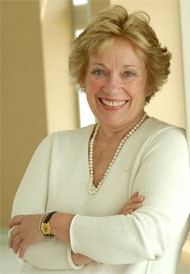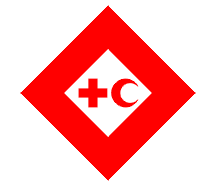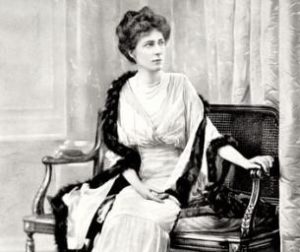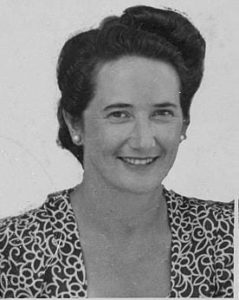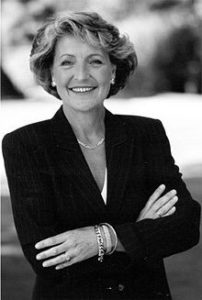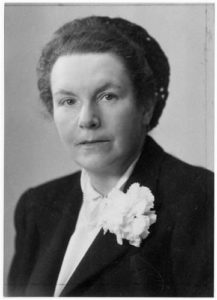Katherine Olmsted – or Catherine M. Olmstead as it is written at the census in 1900[i] – was born in February 1888. When she was 12-year-old, she lived with her parents – Agustus L. and Emma L. Olmstead – at Des Moines Township, Precinct 3 Des Moines city Ward 3, Polk, Iowa. At the same address there is an older brother, Henry L. who is 14; an aunt called Catherine G Lent; and a servant, the 16-year-old Martha M Chingrer. The parents and the aunt hailed from New York, while both children were born in Iowa.
Little is known of Katherine’s childhood and early youth, but it is likely she went to school and continued through high-school or equivalent. At some point she left home to get her training, and in 1910[ii] one finds her as a boarder at “Baltimore Ward 7, Baltimore (Independent City), Maryland, United States”, where she attended “Johns Hopkins School of Nursing” .
Johns Hopkins University’s webpages include “exhibitions”, and one of these provides information[iii] on Ms Olmsted’s career:
“Katherine Olmsted (class of 1912) began her work with the Red Cross as part of a commission of doctors and nurses sent in August 1917 to Romania by way of the Trans-Siberian Railway to fight typhus and study health conditions. Olmsted’s public health nursing included conducting clinics and an outpatient department for women and children from a military hospital along the Eastern Front. This group was forced to evacuate in March 1918. Trapped between the German Army and the Russian Revolution with no outside contact, they escaped from Russia by train through Siberia and Lapland before sailing to England in April 1918.
Olmsted also led postwar reconstruction work at the League of Red Cross Societies in Geneva, Switzerland. In 1921, she became the Associate Chief of the Department of Nursing and Director of Public Health Nursing, and in 1922 Director of the Department of Nursing, where she continued Alice Fitzgerald’s work to form public health nursing organizations worldwide. She organized a course at Bedford College at the University of London for public health nurses from all over the world. She retired from the Red Cross in 1927, took a Cordon Bleu cooking course at the Sorbonne in Paris, and opened a French restaurant in upstate New York”.
A work[iv] on a completely different subject, contains some further biographical information on Katherine:
“[Alice] Fitzgerald was succeeded in the LRCS Nursing Division by American nurse Katherine lmsted. Olmsted was was born in Des Moines, Iowa, in 1888 and graduated from Johns Hopkins in 1912, after first attending the Chicago School of Civics and Philanthropy (i.e., Social Work). After graduating, Olmsted worked for the Baltimore Instructive Visiting Nurse Association (During Mary Beard’s first year there) before moving on to a position within the social services department at Johns Hopkins Hospital. In 1918 Olmsted was appointed executive secretary of the western office of the National Organization of Public Health Nurses. I 1921, Olmsted was appointed as Fitzgerald’s assistant within the LRCS before being appointed director upon Fitzgerald’s resignation.
Despite Olmsted having been educated at Johns Hopkins and being a member of NOPHN, she was views critically by her American colleagues. This was perhaps due to her training and continued work in the area of social work, or a result of her continuation of the League’s work and the promotion of a lower standard of training for nurses under the auspices of national Red Cross Societies”
As part of her work with the League – some things have not changed much in a century – Katherine travelled a good deal, and in January 1923 she was in Belgrade. This is knowable, because she used the opportunity to drop in on the US Consulate and apply for a new passport[v].
In this application one learns that she, before going to Europe, had lived in Wallington, New York, and that she had last left the US, destination Paris, 20 October 1922, arriving I that city 30 of the same month. She took up residence in Paris in order to fill the position of Chief of Nursing Division of the League of Red Cross Societies, 7 Rue Quentin-Rauchart. She informed the passport authorities that she had resided in several places outside the United States: in Japan, Siberia, Russia, and England until 1921, and from 1921 to 1923 in Switzerland and France. While declaring her intention to return to the US, she stated as reasons for asking for a new passport planned travel for the League to Yugoslavia, Hungary, Roumania, Bulgaria, Italy, Austria, Czechoslovakia, Italy, Germany, Poland, France, Switzerland, Denmark, Bulgaria, Holland, Latvia, Lithuania, Esthonie, Finland, Norway, Sweden. Quite a programme!
Later in 1923 Katherine was on a visit in Oslo where, apparently, she had some form of accident and ended up in the Oslo Red Cross Clinic in 1923. During her stay she wrote a letter which was, later, translated and published in the Trondhjem newspaper Adresseavisen[vi]. Here it has been translated back into English:
“What they think, abroad, of Norwegian nursing.
The Director of the Nursing Department at the Federation of Red Cross Societies, fell ill during a stay in Kristiania this summer. She was admitted to the Red Cross Clinic and sent, after she had been discharged, a thank-you letter in which she characterizes the high level of Norwegian nursing. The letter says:
“I would wish that I was able to express more strongly than words can convey, my infinite gratitude for the wonderful way in which I have been received and treated during my stay at the Red Cross’ lovely clinic. Not a day passes without me – in spite of silently complaining of the fact that I have fallen ill – thanking providence for leading me just here, for I know of no other place on earth where I might have had such, quite frankly, enjoyable period of illness, in addition to always having wanted to learn more about Norwegian nursing, which I had been told was of a high standard.
I can now say, with confidence, that this nursing is without equal anywhere in the world.
One has done more, here, than to cure me of my poor knee: I am leaving inspired in my ambition to introduce, in all countries, a better and higher standard for Red Cross Nursing, in the knowledge that this is well within what human beings can achieve: it is already practiced here in Norway, and in a manner which others can aspire to emulate.
As I beg leave to offer you my most profound gratitude for all the care you have offered me, and all warm welcome Norwegian Red Cross has given me, I remain yours affectionately
Katherine Olmsted”.
In 1925, the International Council of Nurses organized a Congress in Helsingfors. One of the last days Katherine Olmsted chaired[vii] a working group debate on the subject of How to attract young women to the nursing profession.
Apparently, the discussions – where representatives of several National Societies participated, highlighting quite large differences between them in terms of ability to recruit[viii]:
“In the discussion Todoroki stated that in Japan six times more applications were received than could be accepted without any particular efforts other than advertisements in newspapers and the usual Red Cross activities. The Japanese and Czecho-Slovakian Red Cross Societies were exceptional in comparison with the other participant countries, which confessed that they had to make special efforts to recruit nurses. The Japanese delegates found themselves in the thick of the discussions: they were no longer “listeners” to other nurses”.
Miss Katherine Olmsted also participated in the second Pan-American Red Cross Conference in Washington, 25 May – 5 June, 1926. She made a presentation on the “Training of Red Cross Nurses” in her capacity of director of nursing section of the League of Red Cross Societies[ix].
Perhaps it was the renewed contact with her home country that led her to reconsider her work with the League, perhaps not. The next several decades of her life have been described by the Historical Society of the Town of Sodus[x], under the hamlet of Wallington: the following text is theirs:
“CATHERINE OLMSTED / NORMANDY INN (1886 – 1964)
Katherine Olmsted was born between 1886 – 1888 and brought up in Des Moines, Iowa. She graduated from Johns Hopkins Hospital Training School for Nurses in 1912.
After her graduation from Johns Hopkins, she remained in Baltimore, first with the Baltimore Instructive Visiting Nurse Association, where she made a special survey on causes of blindness and the care of the blind. She then served in the Social Services Department at Johns Hopkins Hospital. In the spring of 1914, she resigned her position at Hopkins to organize public health work in Jacksonville, Ill. working with newly enfranchised women in the Anti-Tuberculosis League. In 1916 Olmsted’s public health work moved to the Wisconsin Anti-Tuberculosis Association, where she was the State Supervising Nurse and organized and directed the state’s first course in public health work for registered nurses given at the University of Wisconsin through its extension division.
During World War I, Olmsted began work with the Red Cross. She was part of a commission of doctors and nurses sent in August, 1917 to Romania to fight typhus and study health conditions. Olmsted’s public health nursing included conducting clinics and an outpatient department for women and children from a military hospital along the eastern front.
This group was trapped between the German Army and the Russian Revolution with no outside contact. After escaping from Russia by train through Siberia and Lapland, Olmsted returned to the United States in the summer of 1918 to become the assistant secretary of the National Organization for Public Health Nursing.
She served in Chicago as the Western Secretary where she demonstrated public health nursing in rural counties for the Federal Children’s Bureau. In 1921, Olmsted became the Associate Chief of the Department of Nursing and Director of Public Health Nursing with the League of Red Cross Societies in Geneva, Switzerland, and in 1922 Director of the Department of Nursing, where she worked to form public health nursing organizations worldwide. She organized a course in public health nursing at Bedford College, University of London, and Kings College in London for public health nurses from all over the world.
At the end of her time in Europe, Olmsted took the Cordon Bleu cooking course at the University of the Sorbonne in Paris, France. She returned to the United States in 1927 to open her French restaurant, Normandy Inn, next to her brother’s farm near Wallington. She ran the restaurant until her death in 1964. The Restaurant was made to look like a Normandy restaurant and the staff dressed in traditional Normandy costumes.
The story of the Normandy Inn as told in the November 2001 issue of the Sodus Bay Historical Society Newsletter
Travelers in rural upstate New York were frequently amazed and delighted to find in the small community of Wallington, New York an authentic bit of the Old World standing out against the background of a familiar New World setting. For in Wallington, New York, between Sodus village and Alton, before the new state route 104 cut off many of the small villages, there was the Normandy Inn.
This unique restaurant / inn I country store was situated in the midst of apple and cherry orchards and was the subject of much pride and widespread fame.
The story of the Normandy Inn is also the story of Miss Katherine Olmsted, founder and proprietor. Miss Olmsted, after spending over 12 years in the “real” Normandy, in France, brought many souvenirs and lasting impressions of her experiences, as well as an enthusiasm for the Old World atmosphere.
Olmsted served in World War I as a nurse, remaining after the war to work as head of the nursing division of the League of Red Cross Societies for over 12 years. Burnout set in and she left the society. While living in an apartment in Paris with her mother, who had joined her, Katherine heard of the University of Sorbonne cooking school. She attended the famous school, taking the much renowned Cordon Bleu cooking course.
Miss Olmsted’s brother, Harry, had inherited her grandparents’ home in Wallington and invited Katherine and her mother join him there when they arrived “home” from Europe. She and her mother had been discussing the possibility of starting an inn all the way back from Paris, and the decision was made to start such a venture in a former apple dry house on the farm property on the edge of a stream.
The first Inn (1927) was more like a cafe, as it accommodated only 12 patrons. In 1932 with Katherine feet wet in the culinary business, things started to happen. The business opened into a larger building – a 100-year-old barn with roughhewn timbers, artistically converted to its Old World look. Soon after, a dining room was added.
Stories tell of an abandoned nearby trolley bridge that Miss Olmstead got “stuck” with for $12. The timbers, trusses and beams were used in the construction of a new party room. Katherine finished the season having taken in $32,000!
Partly because the new party room was offered to Wallington residents during the off season as a community center, a strong bond developed with area residents. This was demonstrated when one evening, after the restaurant had closed and all the help had left, two large busses carrying about a hundred college fraternity students pulled up in front of the Inn. They were sure that they had made reservations, but actually had not so and were very disappointed. Having plenty of food on hand, Olmstead said “come on in.” She then telephoned a neighbor who blew the fire siren. “There isn’t a fire,” she said, “but this is an S.O.S. call” and enough help arrived to cook and serve dinner. Katherine’s help was just that loyal and was made up of local women who returned every season to serve as cooks, and attractive young girls of the area. charming in their Normandy peasant costumes, serving as waitresses.
A 1959 review by Bob Elwood of the Syracuse Herald-American, described the decor as ancient Normandy and French Provincial. “The fine collection of brass, copper, and pewter utensils, obtained from ancient Normandy kitchens, and antique French Provincial furniture add to the enchanting atmosphere of the place – the former so excellent that it has been exhibited in the Rochester Museum of Arts and Sciences.” The restaurant critic went on to praise the decor: “if it is cold, crackling logs in the fireplace will greet you. In warm weather gay garden umbrellas shield you as you sip your cocktails outdoors.” The gourmet food was served at moderate prices with specialties being French Onion soup, Duck Supreme, Coquille St. Jacques, and imported coffees.
Music set the tone, provided by the famous Harpist Alice Boume, who spent summers on Sodus Bay, wintering at the Garden Seat lnn in Clearwater, Florida.
No one could leave without visiting the country store, located on the second floor, offering imported gift wares, antiques, and consignments of handmade articles such as needlework.
“So after you’ve eaten at the Normandy Inn, to leave without browsing upstairs were a sin For you’ll find gifts galore in the lnn’s Country Store – Such lovely handmade things to suit kith and kin”
The typical meal served at the Normandy may have consisted of the following:
First course:
White Wine, chilled fruit or juice, a fruit or seafood cocktail, and a canapé
Then:
Katherine’s famous French Onion Soup
Main Course:
One-half fried spring chicken (and it, along with roast turkey, steak, fish, or other meats made the lnn distinctive)
Along with the main course were served the freshest of local vegetables separately seasoned. The salad was offered in the true French style, consisting of fresh greens, passed around the table.
Katherine Olmsted died in 1964 at the age of 77, having returned from her annual winter sojourn in Florida.
Ready to start her 37th season, she was preparing the inn when she suffered a heart attack. She died at the Myers Hospital, one of many organizations that she supported, and was buried in Brick Church Cemetery, Sodus Center”.
____________________________________________________
[i] United States Census, 1900,” database with images, FamilySearch (https://familysearch.org/ark:/61903/1:1:M9LH-2SH : accessed 27 January 2020), Catherine M Olmstead in household of Agustus L Olmstead, Des Moines Township, Precinct 3 Des Moines city Ward 3, Polk, Iowa, United States; citing enumeration district (ED) 78, sheet 12A, family 281, NARA microfilm publication T623 (Washington, D.C.: National Archives and Records Administration, 1972.); FHL microfilm 1,240,454.
[ii] “United States Census, 1910,” database with images, FamilySearch (https://familysearch.org/ark:/61903/1:1:M2N8-5YC : accessed 29 January 2020), Katherine M Olmsted, Baltimore Ward 7, Baltimore (Independent City), Maryland, United States; citing enumeration district (ED) ED 79, sheet 1A, family , NARA microfilm publication T624 (Washington D.C.: National Archives and Records Administration, 1982), roll 554; FHL microfilm 1,374,567.
[iii] https://exhibits.library.jhu.edu/exhibits/show/hopkins-and-the-great-war/school-of-nursing/post-war-reconstruction/katherine-olmsted
[iv] Grant, Susan (Editor); Russian and Soviet Health Care from an International Perspective. Comparing professions, practice and gender, 1880-1960; Palgrave Macmillan 2017; seen at https://books.google.no/books?id=LDAtDgAAQBAJ&pg=PA226&lpg=PA226&dq=%22Katherine+Olmsted%22+%22Red+Cross%22&source=bl&ots=Qifg7IO085&sig=ACfU3U2VvBBfmnHYY1z6d_v2QZZW_tX6wg&hl=en&sa=X&ved=2ahUKEwjqibC2wpXnAhUOx4sKHTpzAjIQ6AEwEHoECAcQAQ#v=onepage&q=%22Katherine%20Olmsted%22%20%22Red%20Cross%22&f=false
[v] “United States Passport Applications, 1795-1925,” database with images, FamilySearch (https://familysearch.org/ark:/61903/3:1:3QS7-89D4-G2L?cc=2185145&wc=3XC5-6TP%3A1056306501%2C1056411501 : 22 December 2014), (M1490) Passport Applications, January 2, 1906 – March 31, 1925 > Roll 2328, 1923 Jul, certificate no 321350-321849 > image 472 of 898; citing NARA microfilm publications M1490 and M1372 (Washington, D.C.: National Archives and Records Administration, n.d.)
[vi] Trondhjems Adresseavis 17.10.1923; https://urn.nb.no/URN:NBN:no-nb_digavis_trondhjemsadresseavis_null_null_19231017_157_240_1
[vii] Norges Kvinder, 12.05.1925, https://urn.nb.no/URN:NBN:no-nb_digavis_norgeskvinder_null_null_19250512_5_50_1[viii]The Development of the Japanese Nursing Profession: Adopting and Adapting Western Influences
The Developent of the Japanese Nursing Profession: Adopting and Adapting Western Influences; Aya Takahashi
Routledge, Nov 13, 2003 – History – 224 pages
https://books.google.no/books?id=ZbYg0wZfAj4C&pg=PA122&lpg=PA122&dq=%22Katherine+Olmsted%22+%22Red+Cross%22&source=bl&ots=9p9ddqbmhe&sig=ACfU3U3WWSLEDjcja6b7EfdhYSzAKA6tvg&hl=en&sa=X&ved=2ahUKEwjqibC2wpXnAhUOx4sKHTpzAjIQ6AEwDnoECAkQAQ#v=onepage&q=%22Katherine%20Olmsted%22%20%22Red%20Cross%22&f=false
[ix] Bulletin of the Pan American Union, July 1926, p 878, https://play.google.com/books/reader?id=nmEqAQAAMAAJ&hl=en_GB&pg=GBS.PA631
[x] http://townofsodushistoricalsociety.org/hamlets/wallington/katherine-olmsted/ :
